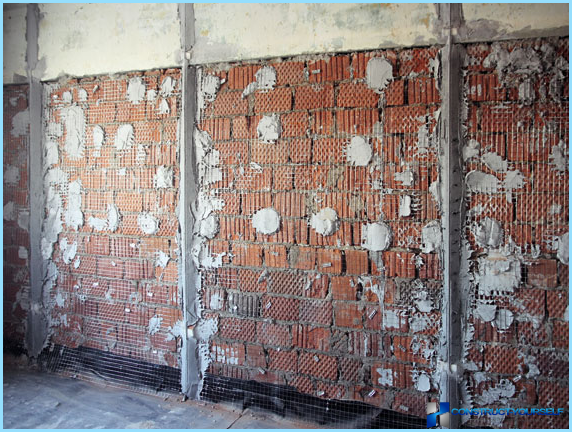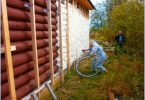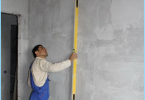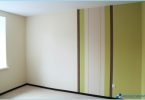The contents
- Preparing walls for plaster with their hands
- Compositions for plastering
- Plaster «coat»
- The use of sandy-clay or calcareous compounds
- Problems of clay plaster
Any premises, or even non-used in auxiliary or technological purposes requires a certain kind of plaster for interior and exterior wall surfaces. First of all, this is the only way to prepare the wall for painting and to fix the construction defects in the walls, hide the cracks or make the surface more or less smooth and pleasing to the eye. You can even with your hands.
Plaster – not a tribute to tradition ^ the
When deciding about the need to do or not to do the plaster walls please note that the current abundance of varied and beautiful finishing materials people continue to plaster the walls, and not because of adherence to traditions:
- Plaster interior are microclimate and comfort of the four walls. Still – healthy lungs and skin. Walls, blocks, ties – everything is composed of cement, unmerciful «dusty», suspension eats into the lungs and skin, clothing, fabrics, and irritating to allergic reactions;
- Properly prepared plaster is easy, its use can make invisible any rolls, bubbles and waves on a vertical wall surface. With drywall it is possible to achieve perfect alignment, but do it at the cost of a dozen centimeters «live» square is a little wanting;
- The plaster is excellent quality – to make the room atmosphere with constant humidity, excess condensation is absorbed by the pores and, if necessary, is issued back.
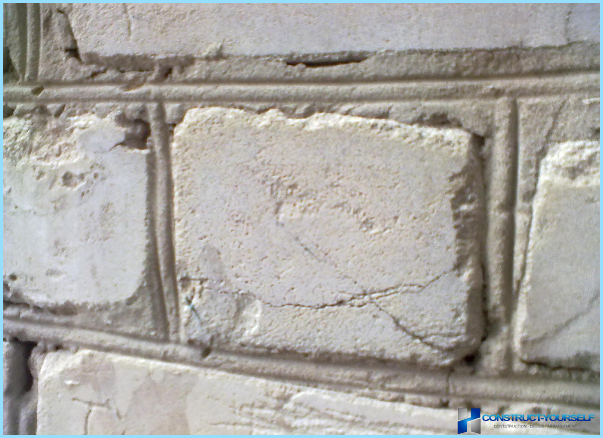
It is clear that everything said applies, above all, the classic formulations of plaster based on sand, lime, clay and cement mortar. Exterior work necessary to prepare the compositions of plaster with diametrically opposite properties.
The exterior plaster must be done to protect the building blocks of masonry and insulation of building walls. Often the appearance of the building with a properly done plaster work is no less attractive than the walls made of bricks. To make the finish solution you can even with their hands, and the price of the material is much cheaper than veneer.
What formulations of plaster and use ↑
Universal composition or mortar for plaster yet, and probably won’t come up. Too different objectives pursued in the plastering of the walls. Most often, on all occasions uses the standard composition based on cement mortar, which we can prepare with your own hands. Not always such a solution is equally suitable for different walls, but in terms of construction and finishing works time to study and read there. And the desire to do things differently and to risk the results of hard work too.
But still, you need to understand how to choose the right composition of plaster to prepare plaster with their hands.
The most popular solution compositions for plastering ↑
Often use three main types:
- Cement-sand mortar with the addition of lime or clay;
- The sandy-clay composition with additives polymer components;
- Lime-plaster repairs and decorative plaster;
- Ready industrial mix for all occasions.
Best buy quality cement 400 and 500 grade, washed sand and a few additives. As required, the solution can be done with your own hands, individually selecting the required proportions of plaster.
How to work with the plastering solutions ↑
The greater the amount of plastering work, the more carefully it is necessary to prepare the grout, the more it can differ in properties and methods of application depending on the use of certain components.
Preparing walls for plaster with their hands ↑
The wall under the plaster, it is first necessary to pre-cook under the coating solution, wash in the literal sense of the word, the more dust, the worse the grip.
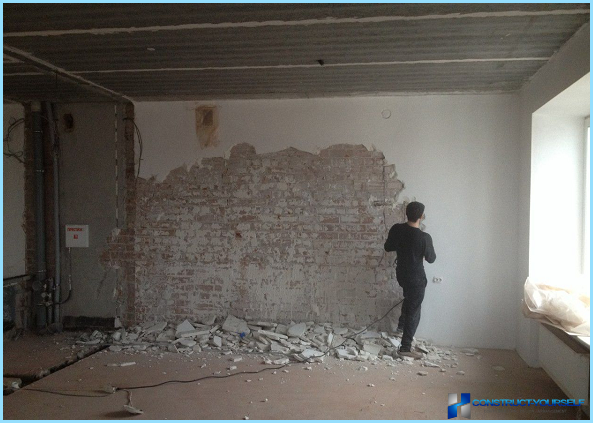
Clean and dry the concrete or brick wall is recommended to prepare using the gasket construction with a hammer or punch a chaotic grid of lines and dashes on the surface, to a depth of 5-7 mm. Than the rough wall, the better «clings» fresh weight of plaster.
Large cracks or spalls should be repaired in advance, no less than a day before major works. Washed brush and a water solution of glue, for example, PVA or Bustilat, just before the start plastering.
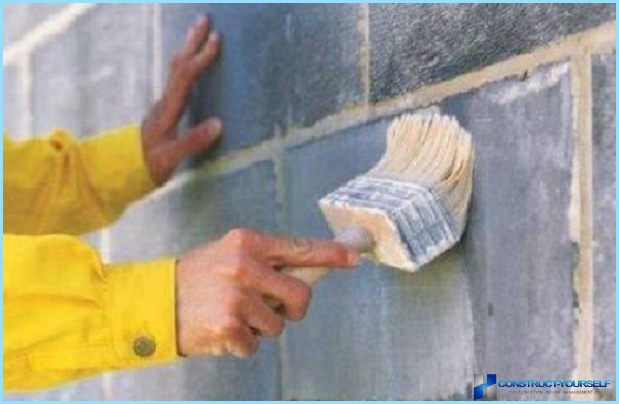
Compositions for plastering ↑
Plastering mass necessary to prepare two different compositions. The first layer is a primer for exterior use will have to find a good polymer additives that increase the plasticity and strength of the solution for the interior of the sand can be replaced with pechenkoj – hydrated and broken in paste lime.
We apply on moist, but not wet the wall a layer of mortar should be free to remain on the surface at a thickness of 10-15 mm. the Main problem is to guess the viscosity of the solution can not be much too wet a mixture, but too thick the solution grasp and lose plasticity faster than will be aligned.
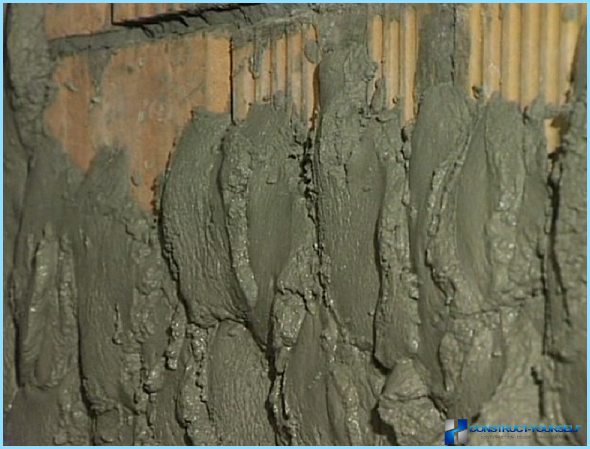
To fill «failures» in the most problematic areas of the wall ought to pre-calculate and prepare the required amount of solution. If the thickness of the plaster layer exceeds 15-20 mm, surface «curve» plot stretched grid for hanging and a reinforcement of the plaster layer. Be prepared to pull the reinforcing material in advance, after stuffing the masses to do this will not succeed.
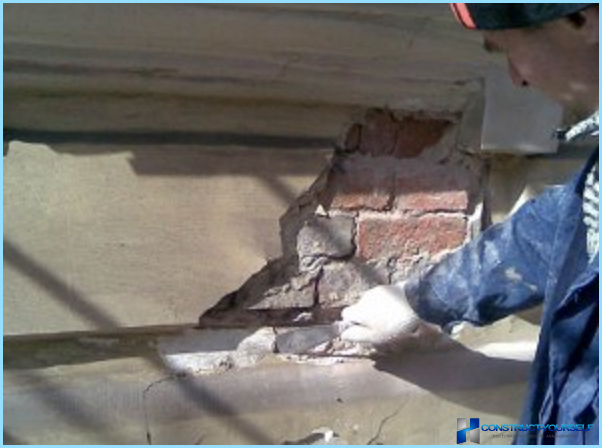
Sometimes the solution for the second layer is replaced ready the finishing mass. Its composition allows to obtain a perfectly smooth surface and to prepare immediately for Wallpaper or painting.
But when large volumes of plaster works often act differently. Ready dry sand for mortar scatter on the sieve with small cells, the small fraction is used to prepare a solution to finish the second layer of plaster. The sand content is higher, the mechanical strength of the composition decreases, while sliding on the layer of smoothing tool can show tearing and risks.
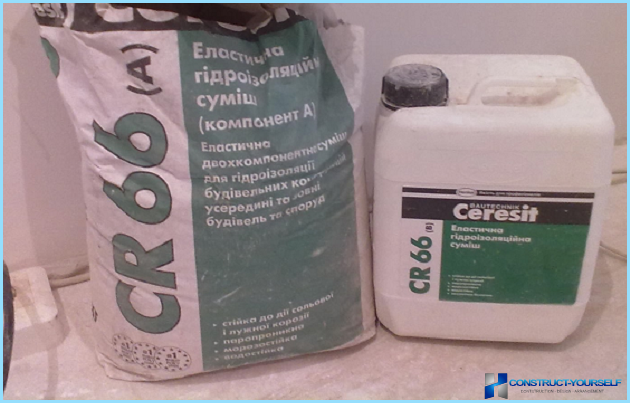
For increasing the viscosity and plasticity of the plaster mass can prepare adhesive and smoothing the surface of plaster to periodically treat the tool.
Plaster «coat» ↑
Often the facades of buildings, especially in the lower parts of the walls require a special kind of plaster, called the people, as «coat». This can be caused by various factors, but most often it is the proximity to the roadway, as a result, splashes and streams of dirty water turn bifundamental part of the building is stained and ugly part of the building. On «coat» it can’t be seen. Sometimes order to prepare «coat» on the surface of walls for laying mats of mineral or polyurethane insulation.
To get «coat», it is necessary to prepare a viscous and fast setting sand and cement composition. In the classic version of the basis under «coat» can cook from conventional soil and spray on it a drop of the liquid quick-setting mortar. The rate of solidification increases with the help of special mineral admixtures – accelerators setting time of the plaster. To increase strength can add chopped short asbestos or glass fibre.
The use of sandy-clay or calcareous compounds ↑
Clay or lime plaster is used most often in wooden constructions. At the cottage or in a summer kitchen of a country house that will get rid of dampness and deterioration of the wooden frame of the building. Clay plaster is very good keeps the microclimate, has low thermal conductivity. In summer, this room is always cool.
Problems of clay plaster ↑
To prepare the clay mass is easy, much harder to do it on the walls. Because of low strength clay and the lengthy drying process with shrinkage of clay plaster trying to cook and use in the shortest possible time.
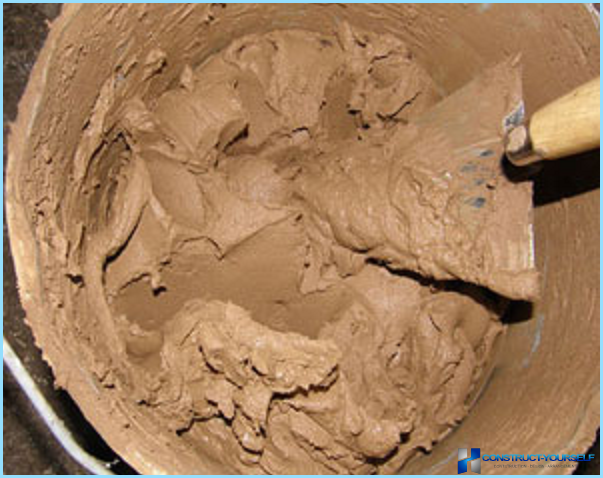
In the preparation for plaster choose fat clay, soft water, lime and sand, carefully grind and kill to obtain a homogeneous dough. If you take a lump in hand, prepared correctly the solution will not drain out of your palm. Before applying the clay it is necessary to prepare the wall, almost always to use clay plaster reinforcing mesh or wooden lattice.
Clay plaster does not like a humid atmosphere and temperature changes. If such a plaster is not live more than six months, the surface layer may swell from moisture and crumble.
In the old mud wall and plaster were several decades. Today, properly prepared plaster of clay help to cut pulp and polymer fibers, additives for cement and coagulants.
Conclusion ↑
In plastering, there are many nuances to properly prepare and use mortar for plaster. One rule of thumb is, what the solution should be prepared in sufficient quantity for coating the same surface in a single layer. Attempts to use old or freshly prepared solution will inevitably lead to cracks and delamination.

